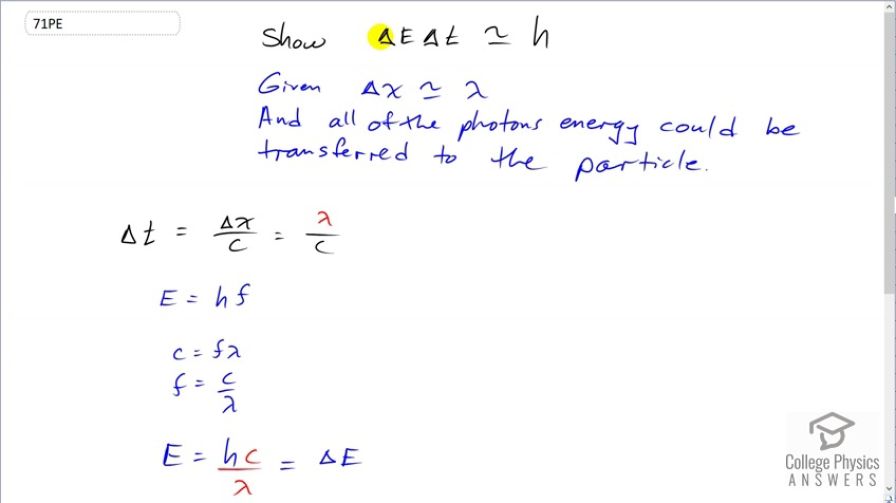Question
Derive the approximate form of Heisenberg’s uncertainty principle for energy and time, , using the following arguments: Since the position of a particle is uncertain by , where is the wavelength of the photon used to examine it, there is an uncertainty in the time the photon takes to traverse . Furthermore, the photon
has an energy related to its wavelength, and it can transfer some or all of this energy to the object being examined. Thus the uncertainty in the energy of the object is also related to . Find and ; then multiply them to give the approximate uncertainty principle.
Final Answer
Please see the solution video for the derivation.
Solution video
OpenStax College Physics for AP® Courses, Chapter 29, Problem 71 (Problems & Exercises)

vote with a rating of
votes with an average rating of
.
Video Transcript
This is College Physics Answers with Shaun Dychko. A particle is being examined using a photon, as most things are and we are going to show that the uncertainty in the energy of the object or the particle multiplied by uncertainty in time is approximately equal to Planck's constant. And we are going to use the assumption that the uncertainty in position of the particle is approximately equal to the wavelength of light being used to observe it. And also use the fact that up to all of the photon's energy could be transferred to the particle. And so the measurement we have for the particle's energy can be influenced by the photon making the measurement and so the photon could be changing the energy of the thing that it's measuring the energy of and by an amount equal to the photon's at the worst case scenario. OK. So first let's figure out an expression for the uncertainty in time; it's gonna be the uncertainty in position divided by the speed of the photon and the uncertainty in position, we are told, is the wavelength of the photon and then we can turn our attention to the uncertainty in energy. And so the uncertainty in energy, we are told, it could be as bad as the energy of the photon. So let's express this energy of the photon— Planck's constant times frequency— in terms of its wavelength. So the wave equation says that the speed of the wave equals the frequency times the wavelength and we'll divide both sides by lambda to get an expression for frequency is speed of light over lambda and then replace f with that here. So the energy is hc over λ and we'll say this photon energy is the uncertainty in the energy measurement of the particle. So then we multiply this by this because this is our expression for uncertainty in energy— hc over λ— and then our uncertainty in time is λ over c and we see that this equals h. Quod erat demonstrandum.